




Reusable Ziploc bags are a great way to reduce waste and save money, but how do you keep them clean? It’s important to wash Ziploc bags regularly to prevent the buildup of bacteria and odors. Thankfully, there are simple and effective ways to clean and sanitize these bags, extending their lifespan and keeping your food fresh and safe.
1. Handwashing with Soap and Water: This is the most basic method of cleaning Ziploc bags. Simply turn the bag inside out, rinse off any remaining food particles, and wash it with warm soapy water. Make sure to scrub all surfaces, including the zipper. Rinse thoroughly and let it air dry before reusing.
2. Dishwasher: If you have a dishwasher, you can save time and water by washing Ziploc bags with your regular dishwashing cycle. First, ensure to turn the bags inside out and shake off any excess food scraps. Place the bags over the prongs on the top rack, making sure they are secured. Run the dishwasher on a normal cycle with hot water and let the bags dry fully before reusing.
3. Bleach Solution: For a more thorough cleaning, you can use a bleach solution to sanitize your Ziploc bags. Mix one teaspoon of bleach with one quart of water and submerge the bags for about five minutes. Rinse well with water and air dry completely before reuse. However, be cautious when using bleach as it may affect the color and integrity of the bags over time.
4. Vinegar Solution: Vinegar is a natural disinfectant and can be used to clean Ziploc bags. Mix equal parts of water and white vinegar and soak the bags in this solution for a few minutes. Rinse thoroughly with water and let them air dry before using again. This method not only helps remove odors but also helps prevent the growth of mold and mildew.
Note: It’s essential to ensure that Ziploc bags are completely dry before storing them to prevent the growth of mold or mildew. Hang them upside down or use a drying rack to allow for proper air circulation.
By following these easy and effective ways to wash Ziploc bags, you can maintain their cleanliness and extend their usability. Remember to always check for any signs of damage or wear and tear with each use, and replace them as necessary. Incorporating these cleaning methods into your routine will not only help reduce waste but also save you money in the long run.
Washing Ziploc Bags – The Basics
Ziploc bags are a convenient and reusable way to store and preserve food. Regular cleaning of these bags is essential to maintain their quality and ensure proper hygiene. In this section, we will discuss the basics of washing Ziploc bags.
1. Empty the Bag
Before washing your Ziploc bag, make sure to empty it of any contents. Dispose of any food scraps or residue in the appropriate manner.
2. Rinse with Warm Water

To start the cleaning process, rinse the Ziploc bag with warm water. This will help remove any remaining food particles and debris.
3. Use Dish Soap
Apply a small amount of dish soap to a sponge or cloth, and gently scrub the inside and outside of the Ziploc bag. Pay special attention to areas with stains or stubborn residue.
4. Rinse Thoroughly
After scrubbing the bag, rinse it thoroughly with warm water. Make sure to remove all soap residue to avoid any potential contamination.
5. Air Dry
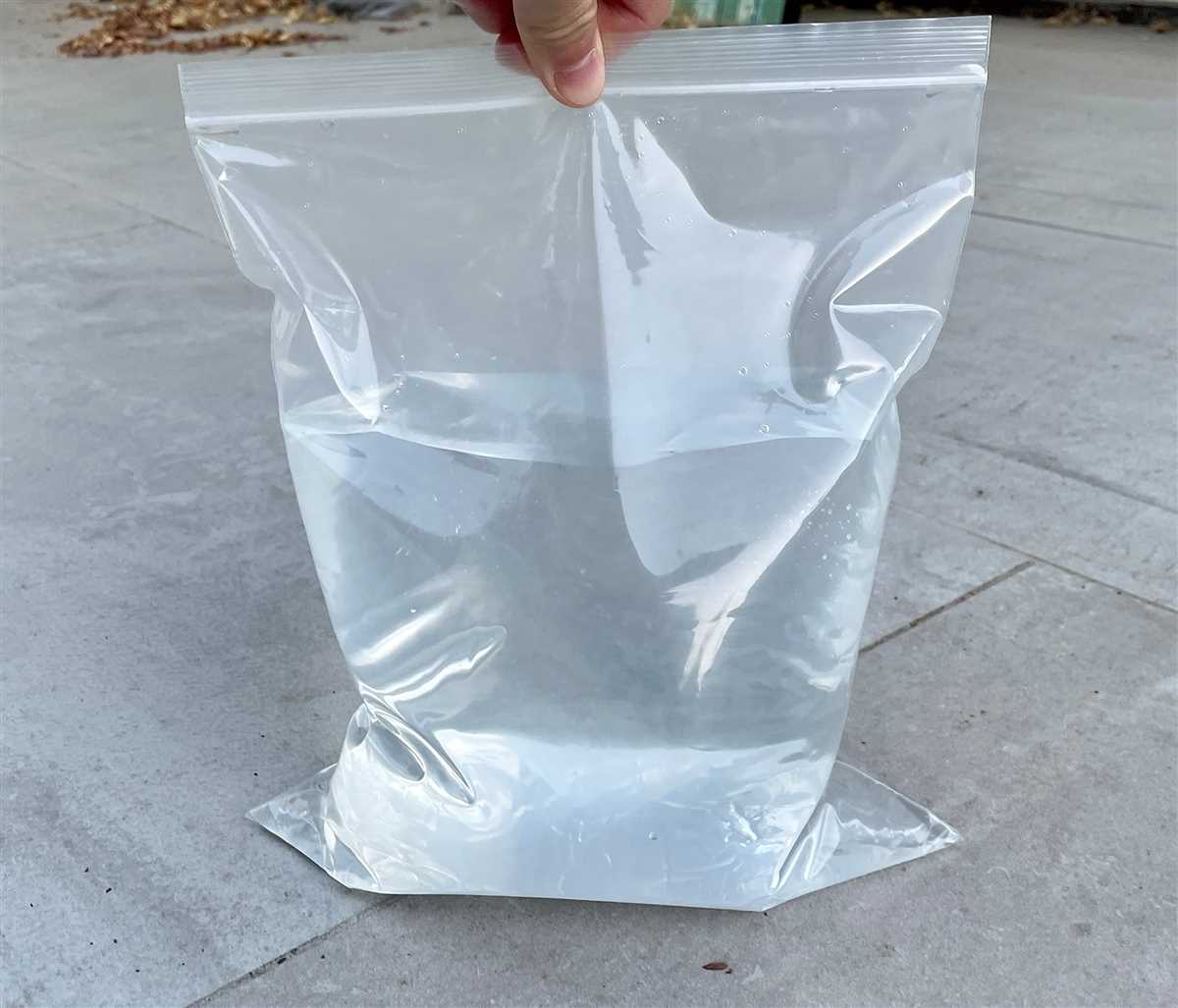
Once the Ziploc bag is clean and rinsed, let it air dry completely. You can hang it up or lay it flat to dry. Avoid using paper towels or cloth towels, as they may leave lint or fibers on the bag.
6. Inspect for Damage
Before reusing the Ziploc bag, inspect it for any signs of damage. Check for holes, tears, or weak spots that may compromise its effectiveness. If any damage is detected, it is advisable to discard the bag and use a new one.
7. Store Properly
After the Ziploc bag is completely dry and free from damage, store it in a cool, dry place. Make sure to keep it away from direct sunlight or excessive heat, as this can degrade the quality of the bag.
- Empty the bag of any contents.
- Rinse with warm water.
- Use dish soap to gently scrub the bag.
- Rinse thoroughly to remove all soap residue.
- Let the bag air dry completely.
- Inspect for any damage before reusing.
- Store the bag in a cool, dry place.
Preparing the Bag
Before washing your Ziploc bag, it is important to properly prepare it to ensure the best results. Follow these steps to prepare your bag for washing:
- Empty the bag: Make sure the bag is completely empty and free of any leftover food or liquids. If necessary, rinse out the bag with warm water to remove any residue.
- Turn it inside out: Turn the bag inside out to expose the interior surface. This will allow for a more thorough cleaning and help to remove any trapped dirt or debris.
- Check for damage: Inspect the bag for any signs of damage, such as holes or tears. If you find any damage, it is best to dispose of the bag and use a new one.
- Pre-soak (optional): For particularly dirty or stained bags, you may choose to pre-soak them before washing. Fill a basin or sink with warm water and add a small amount of dish soap. Place the bag in the soapy water and allow it to soak for a few minutes before proceeding to the next step.
By following these steps, you will ensure that your Ziploc bag is properly prepared for washing and will be clean and ready to use again.
Handwashing Method

To wash Ziploc bags by hand, follow these easy steps:
Step 1: Prepare the Bag
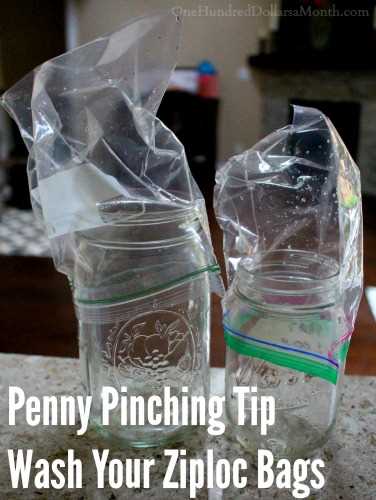
Before washing the Ziploc bag, make sure it is empty and free of any food residue. Check for any tears or holes that may need to be repaired.
Step 2: Fill the Sink

Fill the sink with warm water and add a few drops of dish soap. Make sure the water is not too hot as it can damage the bag.
Step 3: Soak and Swish
Place the Ziploc bag in the soapy water and gently swish it around to ensure all areas of the bag are cleaned. Let it soak for a few minutes to loosen any dirt or stains.
Step 4: Scrub and Rinse
Using a soft brush or sponge, gently scrub the inside and outside of the bag to remove any remaining residues. Pay special attention to the zipper area and corners. Rinse the bag thoroughly with clean water.
Step 5: Air Dry
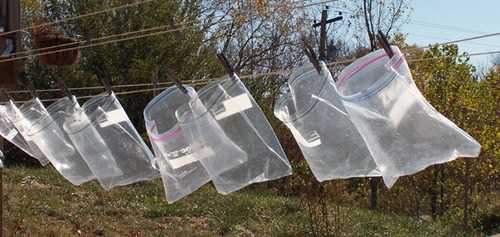
After rinsing, shake off excess water and lay the Ziploc bag on a clean towel or drying rack to air dry completely. Avoid using heat or direct sunlight to dry the bag.
Note: It’s important to wash and dry the bags completely before reuse to prevent bacterial growth and odors.
Dishwasher Method
The dishwasher method is a quick and easy way to clean your Ziploc bags. Follow these simple steps for effective cleaning:
- Start by emptying the contents of the bag and rinsing any food residue with cold water.
- Turn the bag inside out to ensure thorough cleaning.
- Place the bag in the top rack of your dishwasher. Make sure it is securely positioned and won’t fall or get tangled with other items.
- Adjust the dishwasher settings to a low-temperature cycle and a gentle wash. High temperatures and aggressive wash cycles may damage the bags.
- Add a mild dishwashing detergent to the dishwasher dispenser. Avoid using bleach or harsh cleaning agents, as they can affect the integrity of the bag.
- Start the dishwasher and let it complete the cleaning cycle.
- Once the cycle is finished, remove the bag from the dishwasher and inspect it for cleanliness. If there are still any food particles or stains, repeat the process or wash it by hand instead.
- If the bag is clean, shake off any excess water and hang it to air dry. You can use a drying rack or simply hang it on a clothespin or a kitchen utensil.
Remember not to overload the dishwasher as it may impact the effectiveness of the cleaning. Additionally, avoid using the dishwasher method for bags that contain delicate or heat-sensitive items, as they may become damaged.
By using the dishwasher method, you can save time and effort while effectively cleaning your Ziploc bags for reuse.
Drying and Storing
Once you have cleaned your Ziploc bags, it’s important to dry them properly before storing them away. Here are a few easy and effective ways to dry and store your Ziploc bags:
Air Drying
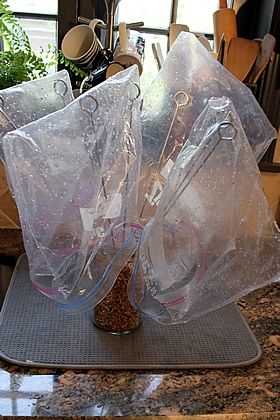
- After washing your Ziploc bags, place them in a dish rack or on a clean towel.
- Allow the bags to air dry naturally. This may take a few hours to overnight.
- Make sure the bags are completely dry before storing them.
Using a Drying Rack
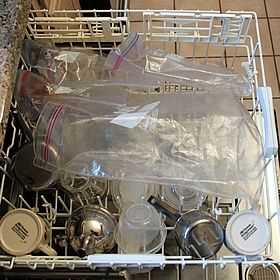
- If you have a drying rack, place the washed Ziploc bags on the rack, ensuring that they are spread out to allow adequate airflow.
- Leave the bags on the rack until they are completely dry.
- Once dry, store the bags in a cool, dry place.
Using a Dishwasher
- If your Ziploc bags are dishwasher-safe, you can place them in the top rack of your dishwasher to dry.
- Run a rinse cycle without any detergent.
- After the rinse cycle is complete, remove the bags from the dishwasher and allow them to air dry before storing.
- Be sure to check the manufacturer’s instructions for your specific brand of bags to ensure they are dishwasher-safe.
Note: It’s important to make sure your Ziploc bags are completely dry before storing them to prevent any mold or mildew from developing.
When it comes to storing your Ziploc bags, there are a few tips to keep in mind:
- Store your Ziploc bags in a cool, dry place away from direct sunlight.
- Avoid folding or creasing the bags as this can weaken the seal.
- If you want to save space, try folding the bags neatly and placing them in a drawer or container.
- Consider using a storage bag organizer to keep your Ziploc bags neatly stored and easily accessible.
By following these drying and storing tips, you can ensure that your Ziploc bags stay clean and ready for your next use.
Tips for Extending the Lifespan

- Wash your Ziploc bags as soon as possible after use. Leaving food debris or residue in the bags can cause them to degrade faster.
- Use a gentle dish soap and warm water to clean the bags. Avoid using harsh chemicals or abrasive scrub brushes, as they can damage the plastic.
- Turn the bags inside out to ensure a thorough cleaning. This will help remove any hidden food particles or oils.
- Allow the bags to air dry completely before storing them. Drying them thoroughly will prevent the growth of mold or mildew.
- Store the Ziploc bags in a cool, dry place. Avoid exposing them to direct sunlight or extreme temperatures, as this can cause the plastic to deteriorate.
- Avoid using the bags for hot liquids or foods. The heat can weaken the plastic and cause it to warp or melt.
- Do not overfill the bags. Overfilling can put strain on the zipper and cause it to break or become less effective.
- Inspect your Ziploc bags regularly for any signs of damage or wear. If you notice any holes or tears, it’s time to replace them.
- If you’re concerned about the environmental impact of using disposable plastic bags, consider switching to reusable alternatives, such as silicone storage bags or glass containers.
FAQ
What are some easy ways to wash Ziploc bags?
There are several easy ways to wash Ziploc bags. One method is to turn the bags inside out and wash them with warm soapy water. Another method is to place the bags in the dishwasher on the top rack. You can also use a cleaning solution made of equal parts vinegar and water to clean the bags.
Can I reuse Ziploc bags?
Yes, you can reuse Ziploc bags. They are designed to be reusable and can withstand multiple uses if washed properly.
What should I do if my Ziploc bags have a strong odour?
If your Ziploc bags have a strong odour, you can try soaking them in a mixture of water and baking soda for a couple of hours. This should help remove any odours. You can also try using a dish soap that has a strong scent to mask the odour.
Is it safe to wash Ziploc bags in the dishwasher?
Yes, it is safe to wash Ziploc bags in the dishwasher. However, it is recommended to place them on the top rack to avoid direct exposure to the heating element. Make sure to check the manufacturer’s instructions on the box to ensure the bags are dishwasher-safe.
How long can I expect a Ziploc bag to last with regular use and washing?
The lifespan of a Ziploc bag can vary depending on how often it is used and washed. With regular use and proper washing, a Ziploc bag can last for several months to a year. However, it is important to check for any signs of wear and tear, such as holes or weakened seals, and replace the bag if necessary.














